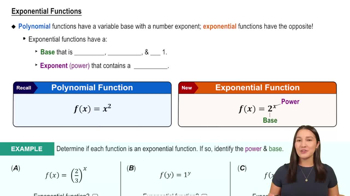13-26 Implicit differentiation Carry out the following steps.
a. Use implicit differentiation to find dy/dx.
sin y = 5x⁴−5; (1, π)
 Verified step by step guidance
Verified step by step guidance Verified video answer for a similar problem:
Verified video answer for a similar problem:



 5:14m
5:14mMaster Finding The Implicit Derivative with a bite sized video explanation from Patrick
Start learning